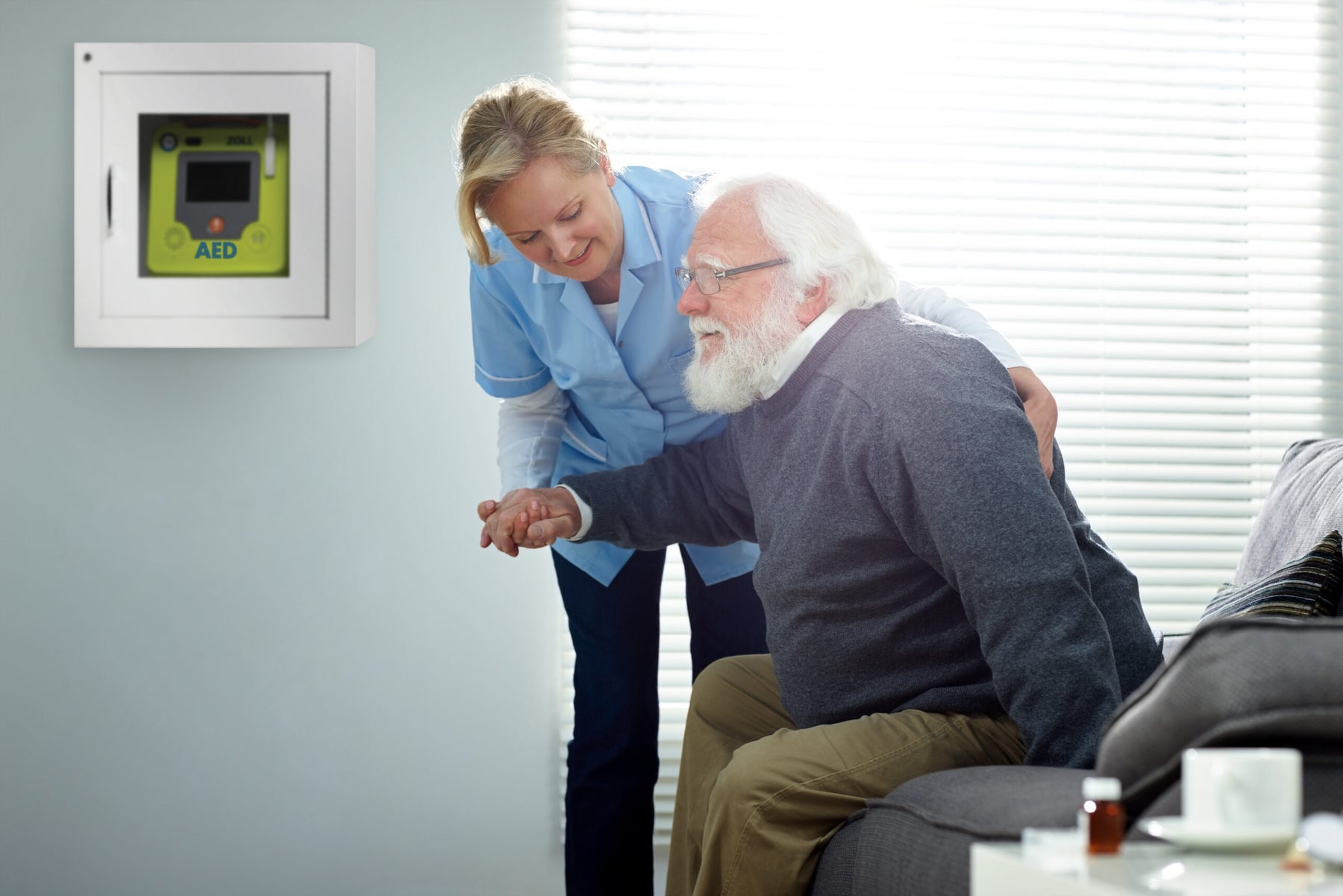Over £100 (Mainland UK)
Over £100 (Mainland UK)

Written by Elle Hart
When it comes to care homes, ensuring the safety and well-being of residents is always the top priority. The Care Quality Commission (CQC) is responsible for regulating care services and setting standards to ensure a safe environment. One question that often comes up is: does the CQC require care homes to have defibrillators?
Let’s take a closer look at what the CQC says, the benefits of having a defibrillator, and how to store and source one for your care home.
At present, the CQC doesn’t specifically require care homes to have a defibrillator on-site. However, the CQC does expect care homes to be equipped to handle medical emergencies and have appropriate measures in place, especially if residents have underlying health conditions that may require urgent attention.
While there’s no official rule mandating defibrillators, care homes are expected to assess the needs of their residents and ensure they can provide effective emergency care. This might include having systems in place for dealing with cardiac arrests and making sure staff are trained in life-saving techniques like CPR. Quick access to emergency services is also crucial.
Although there’s no blanket rule from the CQC, there may be factors to consider when deciding whether to install a defibrillator. For instance, care homes with elderly residents or those with known heart conditions might find it especially beneficial.
Local health authorities or care organisations may also offer additional guidelines or recommendations. Many care homes, even if not required, choose to have a defibrillator as part of their emergency preparedness. Having one in place can demonstrate a commitment to high-quality care, which could be an advantage during CQC inspections.
The advantages of having a defibrillator in a care home are hard to ignore. Here are just a few big benefits of having such a device within your care service:
If you decide to get a defibrillator for your care home, it’s important to make sure it’s stored and maintained correctly. Defibrillators should be easily accessible—ideally, in a communal area that’s clearly marked and reachable during an emergency.
Regular maintenance is essential to ensure the device is ready when it’s needed. This includes checking the battery and pads regularly and ensuring they are replaced as needed. Most modern defibrillators have self-check functions and alert systems, but care homes should still have a scheduled maintenance routine to be on the safe side.
It’s also vital that staff know how to use the defibrillator. While most devices are designed to be simple and come with voice prompts or visual instructions, staff training is key to making sure they feel confident in an emergency.
So you’ve decided to get a defibrillator for your care home – amazing! There are plenty of options for care homes looking to purchase a defibrillator. Several trusted manufacturers specialise in medical equipment, and defibrillators can either be bought outright or leased, depending on the care home’s budget.
When selecting a defibrillator, it’s important to choose a reliable model that complies with UK and EU safety standards. Look for certifications like the CE mark to ensure the device meets the necessary regulations.
Some well-known brands include Zoll, Philips, and Stryker, all offering defibrillators suitable for care environments. If you are feeling overwhelmed with which model is the right one for you, get in touch with the friendly sales team here at Defib4Life. Our experts can help you figure out what type of AED is right for you and your business’s needs.
Defibrillators we stock are in our shop, also you can email or call us sales@defib4life.co.uk – 01629710128 and find us on social media, on Facebook, Instagram & LinkedIn.
This blog post was guest-written by the CQC experts Affinity Care Advisory, you can find them on social media, on Instagram & LinkedIn.